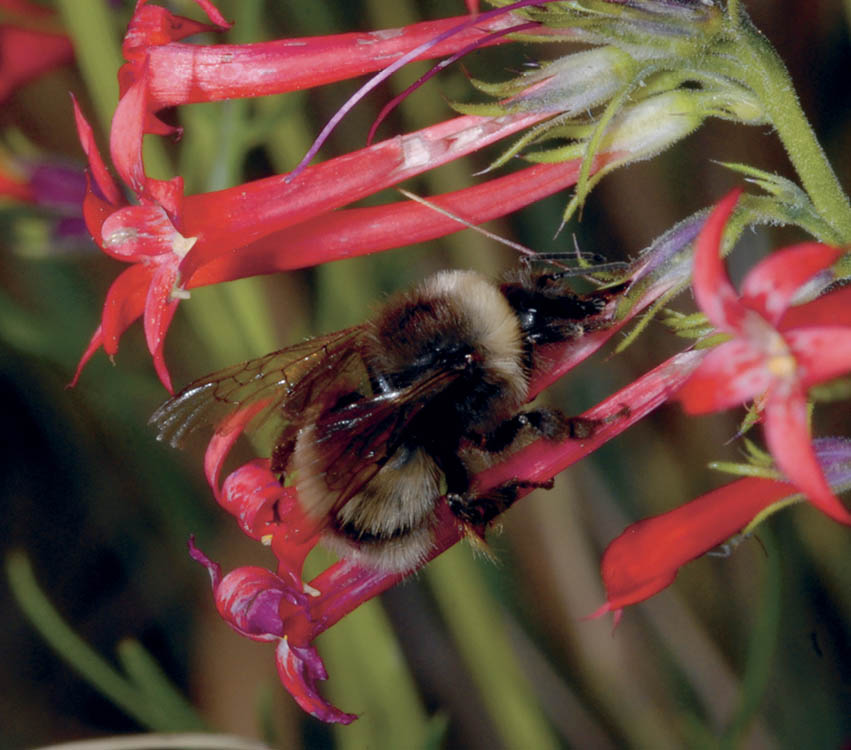Identify 10 Native Pollinators
[Adapted from Attracting Native Pollinators by The Xerces Society]
Many insects do the work of pollination, but none so much as our native bees. These insects are vital to a large majority of fruit and vegetable crops that we eat. They also keep plant communities healthy and productive and support the wide range of wildlife that feeds on seeds and fruits. Humans can support these important pollinators by planting a variety of flowering plants (see Create a Pollinator-Friendly Meadow) and preserving habitat, large and small. Here are some native pollinators to keep an eye out for.
Andrena: Mining Bees
Andrena bees are frequently encountered by gardeners because of their habit of nesting in lawns, typically in sandy soil near or under shrubs.
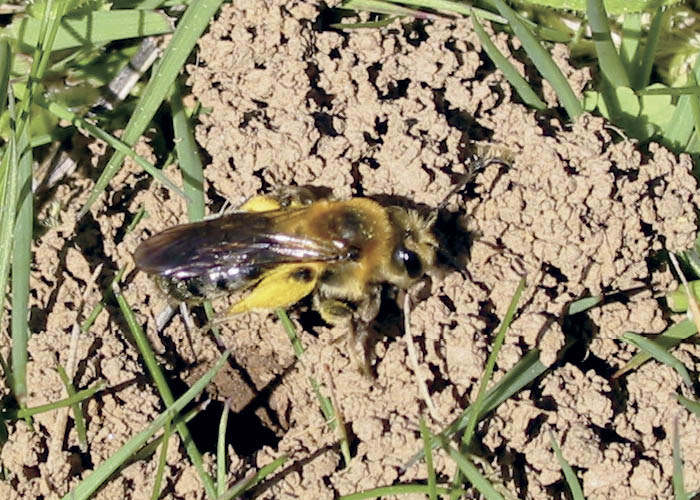
Agapostemon: Green Sweat Bees
A fast-moving metallic green blur over summer flowers is probably an Agapostemon, a genus widespread across North America. They dig deep, vertical burrows in flat or sloping soil.
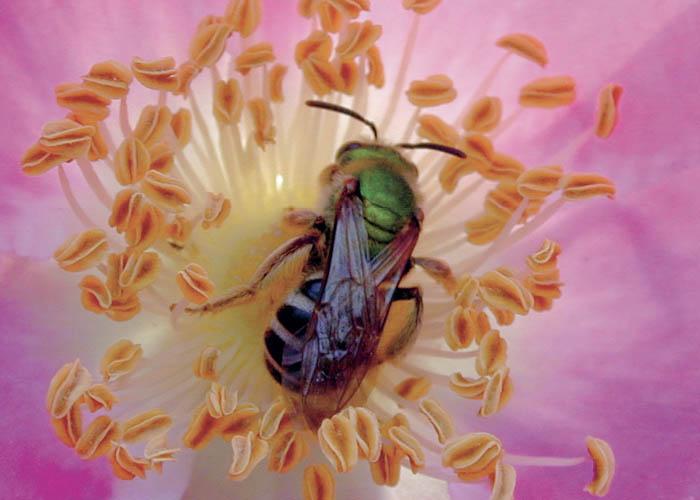
Halictus: Sweat Bees
Halictus are called sweat bees because they are attracted to human sweat and drink it for its salt content. They are important pollinators of crops such as hybrid sunflowers and watermelon.

Hoplitis: Mason Bees
Hoplitis are called mason bees because they construct walls to separate the brood cells in their nests. They visit a wide variety of flowers, many favoring plants in the pea, mint, and figwort families.
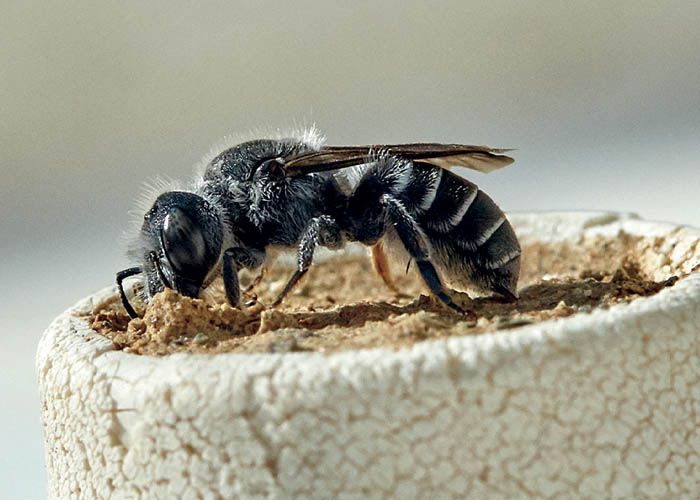
Anthidium: Carder Bees
Anthidium are called carder bees because they “card” or comb cottony down from hairy leaves and use the down to construct brood cells. It’s easy to know if carder bees have nested in a tunnel: it’s plugged with a tuft of hairs.
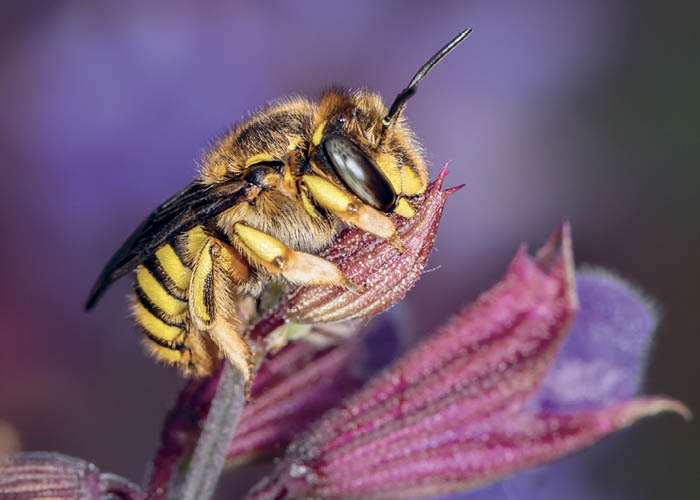
Megachile: Leafcutter Bees
Megachile cut pieces of leaves or petals with which to construct their brood cells. Some species specialize on certain plants such as those in the aster and pea families.

Peponapis: Squash Bees
Peponapis species all specialize in gathering nectar and pollen from flowers of squash plants, including pumpkins, watermelon, squashes, and gourds. They forage early in the morning when squash flowers open and mate inside the flowers, and males even shelter overnight in them.
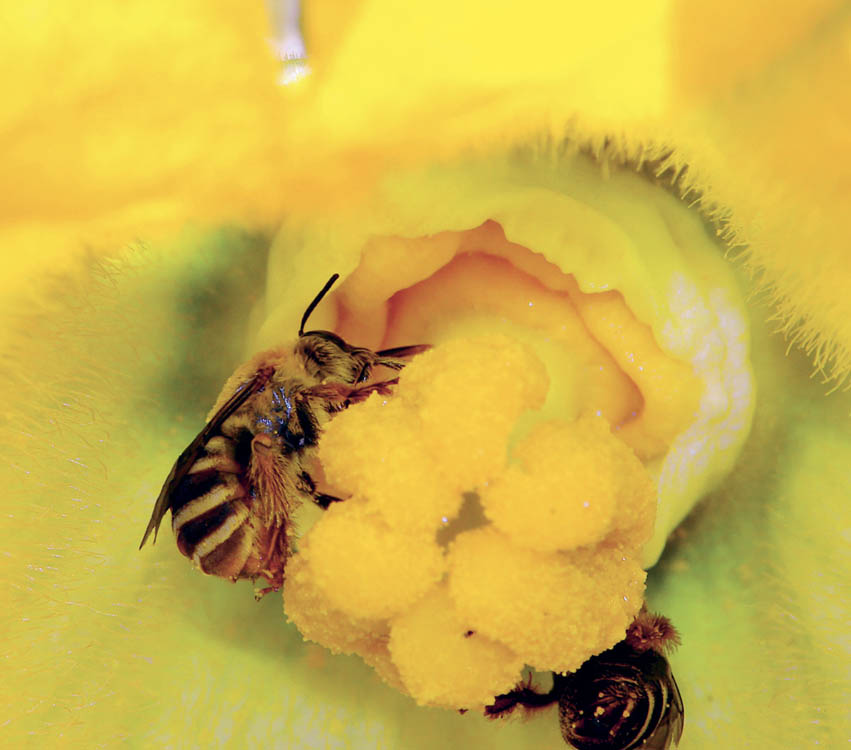
Svastra: Sunflower Bees
Svastra females have large scopae that cover the lower half of their rear legs, making it look like they are wearing shaggy legwarmers. Many species are associated with sunflowers, while others specialize on the evening primrose family and one on cactus.
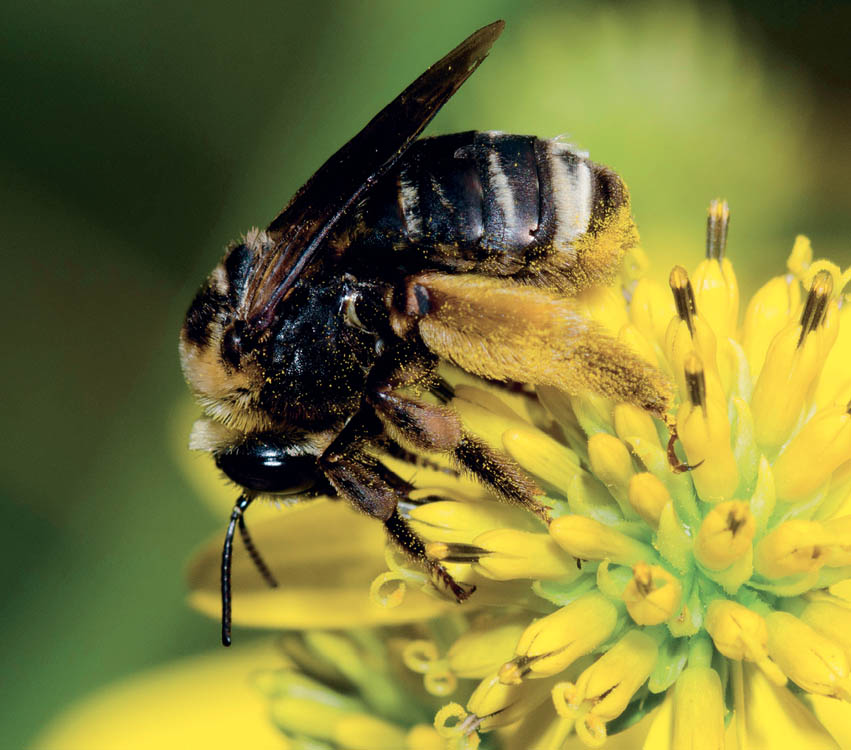
Anthophora: Digger Bees
Anthophora visit a wide variety of flowers and have very long tongues that enable them to drink nectar from deep flowers. One species has been shown to be an important pollinator of cherry tomato crops.
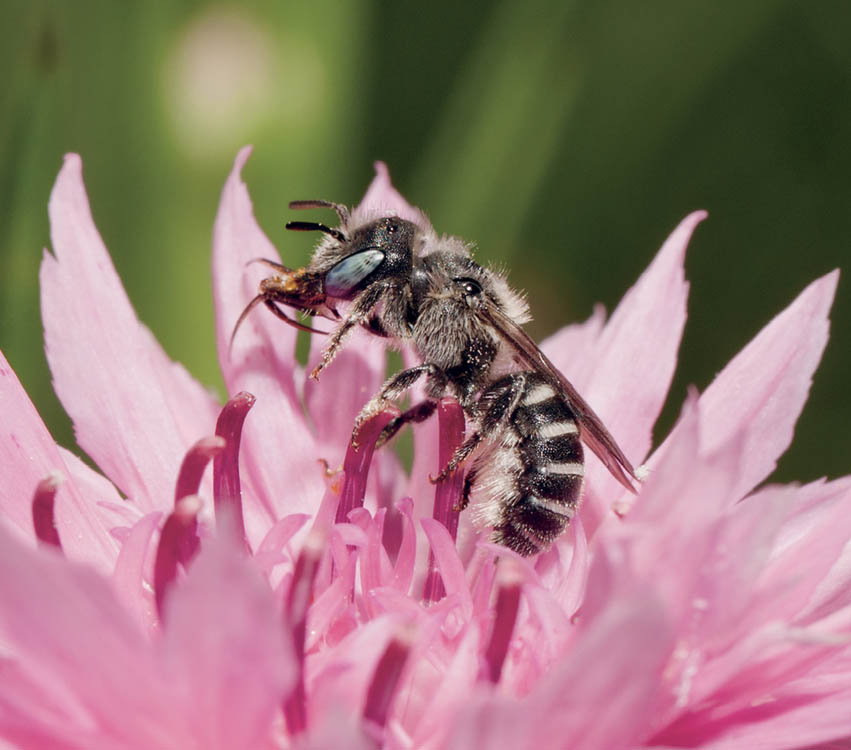
Bombus: Bumblebees
Bumblebees are among the most easily recognized and best-loved bees. They nest in colonies in small cavities such as abandoned rodent burrows and grass tussocks. They are important pollinators of crops as diverse as tomatoes, watermelons, and blueberries.
